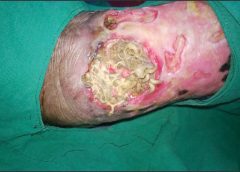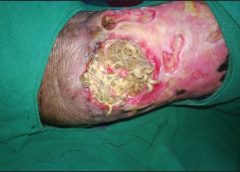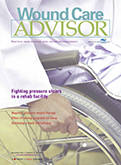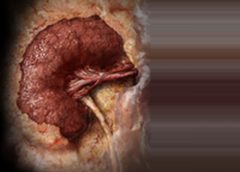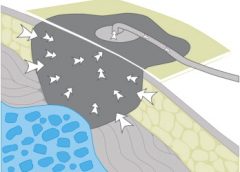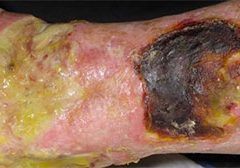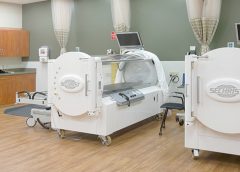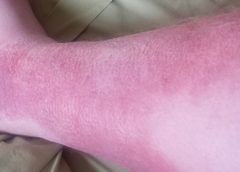In the first article of this series, I shared how the NAWCO Certification Committee works. Although it was only a brief overview, I hope it gave you an idea of the work this talented group of individuals does. In this article, I will continue to introduce you to the 15 members of the committee. (more…)
Read MoreSearch Results for: next cws
Immobility as the root cause of pressure ulcers
By Jeri Lundgren, BSN, RN, PHN, CWS, CWCN
Many factors can contribute to the formation of a pressure ulcer, but it’s rare that one develops in an active, mobile patient. As the National Pressure Ulcer Advisory Panel 2014 guidelines state, “Pressure ulcers cannot form without loading, or pressure on the tissue. Extended periods of lying or sitting on a particular body part and failure to redistribute the pressure can lead to ischemia and therefore tissue damage.” Thus, immobility is frequently the root cause of pressure ulcer development. (more…)
Read MoreHelping patients with lower-extremity disease benefit from exercise
By Jeri Lundgren, BSN, RN, PHN, CWS, CWCN
Research has shown that exercise can help ease symptoms in patients with arterial insufficiency, venous insufficiency, neuropathic disease, or a combination of these conditions. Here’s what you need to know to ensure your patients reap the most benefits from exercise. (more…)
Read MoreUsing maggots in wound care: Part 2
By Ronald A. Sherman, MD; Sharon Mendez, RN, CWS; and Catherine McMillan, BA
Note From the Editor: This is the second of two articles on maggot therapy. The first article appeared in our July/August 2014 issue, Read part 1 here.
Whether your practice is an acute-care setting, a clinic, home care, or elsewhere, maggot debridement therapy (MDT) can prove to be a useful tool in wound care. But setting up any new program can meet resistance—and if you seek to establish a maggot therapy program, expect to meet significant resistance. By arming yourself in advance, you can achieve your goal more easily. This article covers all the bases to help you get your maggot therapy program off the ground. (more…)
Read MoreUsing maggots in wound care: Part 1
By: Ronald A. Sherman, MD; Sharon Mendez, RN, CWS; and Catherine McMillan, BA
Maggot therapy is the controlled, therapeutic application of maggots to a wound. Simple to use, it provides rapid, precise, safe, and powerful debridement. Many wound care professionals don’t provide maggot therapy (also called wound myiasis) because they lack training. But having maggot therapy technology available for patients adds to your capabilities as a wound care provider. (more…)
Read MoreWhat is a comprehensive risk assessment?
By Jeri Lundgren, BSN, RN, PHN, CWS, CWCN
Prevention of pressure ulcers and skin breakdown begins with a comprehensive risk assessment. Most providers use a skin risk assessment tool, such as the Braden or Norton scale. While these tools have been validated to predict pressure ulcer development, their use alone isn’t considered a comprehensive assessment, and frequently the individual risk factors they identify aren’t carried through to the plan of care. (more…)
Read More2014 Journal: March April Vol. 3 No. 2
Turning programs hinder a good night’s sleep
By Jeri Lundgren, BSN, RN, PHN, CWS, CWCN
We’ve all experienced how a bad night’s sleep can affect our mood and ability to function the next day. Now imagine you’re a patient who has a pressure ulcer, most likely secondary to a declining disease state, and you’re being awakened and manipulated every 2 hours or in some cases hourly. How is your body supposed to recover without adequate sleep? (more…)
Read MoreAvoid surprises when connecting between care settings
By Jeri Lundgren, BSN, RN, PHN, CWS, CWCN
As wound care clinicians, we know that an interdisciplinary, holistic approach to prevention and management of a wound is crucial to positive outcomes, no matter where the patient is being seen. Yet too often when a patient transfers from one care setting to another, the only wound information that’s communicated is the current topical treatment. Most transfer forms only include generic spaces for “any skin concerns” and “treatments,” with no prompts for obtaining additional information. In fact, clinicians in many care settings frequently report they had no idea the patient had a wound until he or she was admitted.
Here’s how you can get the information you need to best care for the patient being transferred. (more…)
Read MoreCompression therapy for chronic venous insufficiency, lower-leg ulcers, and secondary lymphedema
By Nancy Chatham, RN, MSN, ANP-BC, CCNS, CWOCN, CWS, and Lori Thomas, MS, OTR/L, CLT-LANA
An estimated 7 million people in the United States have venous disease, which can cause leg edema and ulcers. Approximately 2 to 3 million Americans suffer from secondary lymphedema. Marked by abnormal accumulation of protein-rich fluid in the interstitium, secondary lymphedema eventually can cause fibrosis and other tissue and skin changes. (more…)
Read MoreWhat’s causing your patient’s lower-extremity redness?
By Robyn Bjork, MPT, CWS, WCC, CLT-LANA
The ability to understand or “read” lower-extremity redness in your patient is essential to determining its cause and providing effective treatment. Redness can occur in multiple conditions—hemosiderin staining, lipodermatosclerosis, venous dermatitis, chronic inflammation, cellulitis, and dependent rubor. This article provides clues to help you differentiate these conditions and identify the specific cause of your patient’s lower-extremity redness. (more…)
Read MoreApply QAPI to reduce pressure ulcer rates
By Jeri Lundgren, BSN, RN, PHN, CWS, CWCN
The Affordable Care Act of 2010 requires nursing homes to have an acceptable Quality Assurance and Performance Improvement (QAPI) plan within a year after the start of the QAPI regulation. While the implementation of this regulation may be a year out, now is the time to start applying its principles. Reducing pressure ulcer rates is a great program to target for a QAPI plan.
A team approach
If you decide to use pressure ulcers as your QAPI project, don’t take on your entire program at once. Break the program down into system subsets (for example, admission process, prevention program, and weekly rounds). Determining the status of your program in each subset—completed, needs improvement, or not completed—can help you prioritize which areas to target. It’s important you have support from leadership for your efforts.
I’ll use the example of the admission phase (ensuring that within the first 24 hours, skin and risk concerns are identified and a temporary plan of care is implemented) to illustrate a QAPI project. To address this area, a team was created, including representation from staff members involved with the admission process. The team then used the problem-solving model Plan-Do-Study-Act (PDSA) to examine the process.
The first step in the PDSA cycle is to Plan. During this step, you:
• evaluate and analyze the current process to determine baseline data, which are used to measure progress
• identify system performance gaps
• determine the root cause of the performance gaps
• develop an action plan that identifies the goals, steps, responsible staff, and target dates.
In our example, the team determined that within the first 24 hours, skin inspections were being completed only 10% of the time. The root-cause analysis revealed that the admission nurses didn’t feel competent to document identified pressure ulcers or skin concerns, so they deferred it until the wound nurse was available. The team’s action plan included the following:
• Develop and educate all the facility nurses on how to complete and accurately document a skin inspection.
• Develop and implement a competency evaluation to assess the nurse’s ability to apply the knowledge at the bedside.
• Develop an ongoing plan to ensure all nurses receive this education during orientation and yearly thereafter.
The team also set the following goal:
By the end of the next quarter, 100% of admitted patients will have an accurate skin inspection completed within 24 hours of admission.
The second step of the PDSA cycle is Do. During this step, you implement and execute the plan, while documenting your observations and recording data.
In our example, the “Do” was to:
• develop and provide the skin inspection education and bedside competency evaluations
• develop an evaluation and tracking
system
• add the education to the orientation program
• add the education to the staff development calendar to be offered yearly.
The third step of the PDSA cycle is to Study: In this phase, you:
• reevaluate and analyze the system
• compare the results with the baseline data and predictions
• summarize what was learned and accomplished and what needs to be improved
• determine if another PDSA cycle is
necessary to continue to improve the system.
Once all staff had been properly educated and competency testing completed, an analysis of the rate and accuracy of the admission skin inspections done within 24 hours of admission was completed. It was found that 100% of the patients admitted had a complete skin inspection done within 24 hours. However, not all the nurses could accurately stage pressure ulcers, so it was determined that the system needed improvement to ensure accurate assessments.
The last step of the PDSA cycle is to Act. In this step, you:
• determine what changes need to be made
• modify the plan to continue to improve the system
• repeat the PDSA cycle as necessary.
In our example, the team determined the nurses needed more guidance and education on staging of pressure ulcers. Therefore, a new PDSA cycle was set to ensure the nurses are competent in this area.
Benefits for staff and patients
It may be difficult to start the QAPI project and at times the process may be stressful, but keep in mind that a successful pressure ulcer QAPI project can improve not only the quality of life and care of your patients but also morale and team building for your staff. n
Jeri Lundgren is director of clinical services at Pathway Health in Minnesota. She has beenspecializing in wound prevention and management since 1990.
Read More


